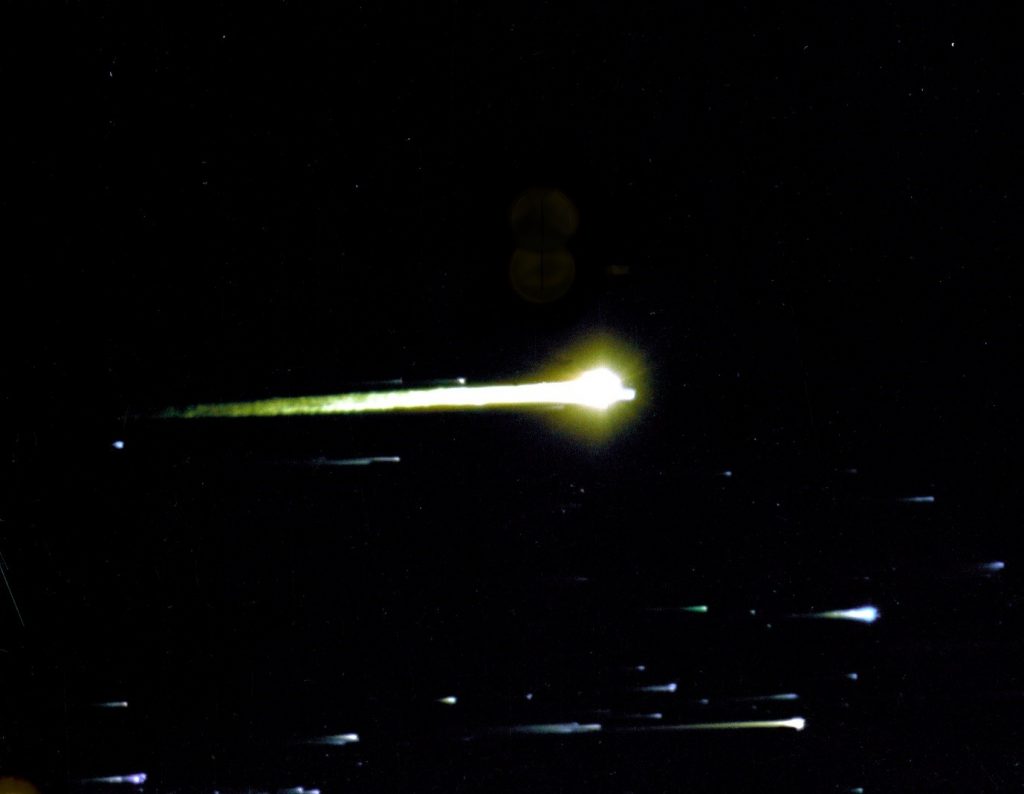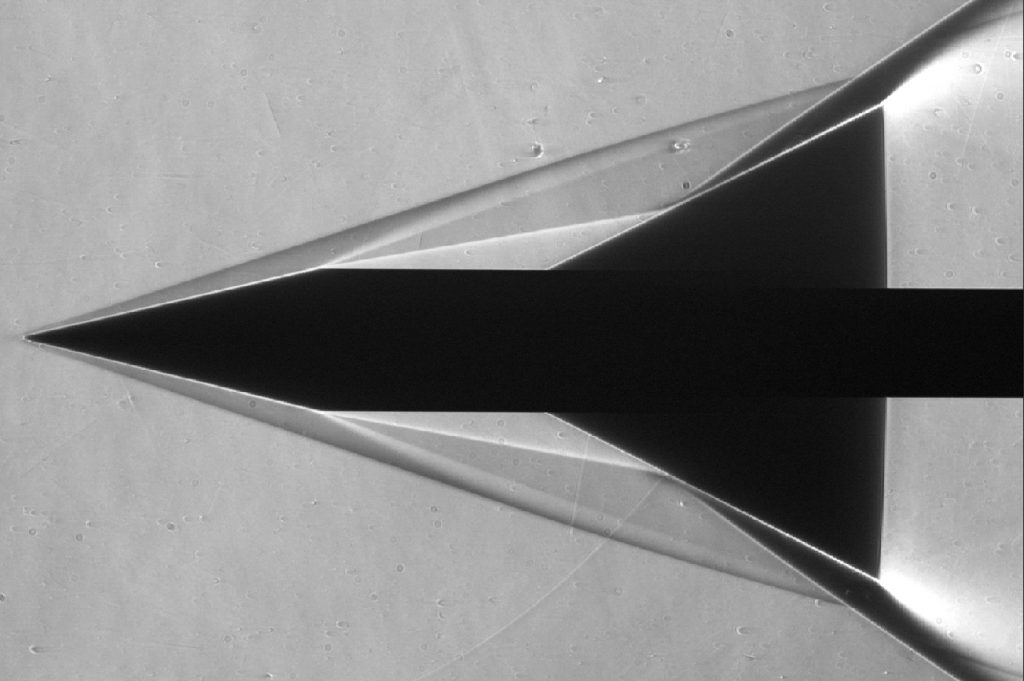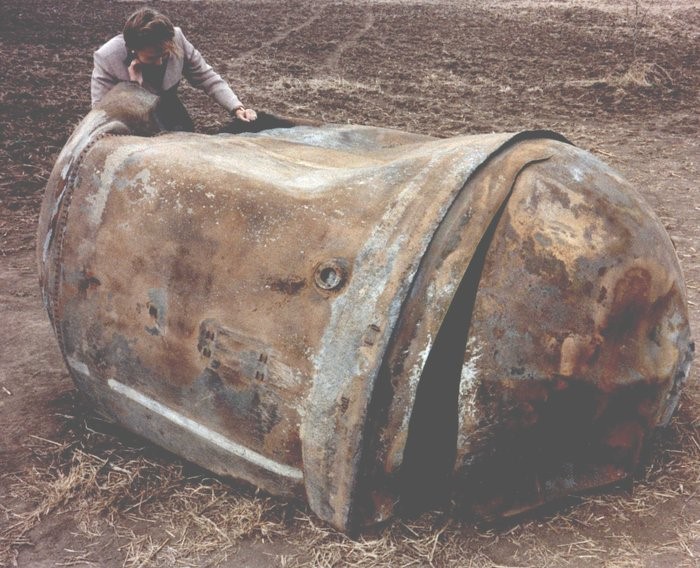Please note: the Soyuz spacecraft and Sokol spacesuit are no longer on display at the Science and Industry Museum. To find out what exhibitions and activities are open today, visit our What’s On section.
Whenever I think of re-entry, it conjures up an image of a tiny capsule falling blisteringly fast towards Earth filled with a crew coming back from an adventure in space. Outside the porthole windows of their spacecraft all they can see is a bright fire enveloping their spacecraft as they make the decent towards home.

Image credit: USAF
When you picture the experience in these terms, it is easy to see why re-entry is such a technical challenge. Even today when crews routinely come home from a mission to the International Space Station (ISS), the danger is still there.
Why is it challenging?
When in orbit you are in constant free-fall, and the velocity required to keep orbiting the earth at the altitude of the ISS is around 7.66 km every second. We know that energy is neither created nor destroyed, so all of the kinetic energy the spacecraft has to be dealt with when it re-enters the earth’s atmosphere, and this typically becomes heat.
If Tim Peake’s Soyuz capsule weighs 3 tonnes, then its kinetic energy is 88,000 megajoules, or the same energy as over 3 million Mars bars!
What are shock waves and what is a Mach number?
As the capsule “falls” back to earth after it has de-orbited, it compresses the air molecules ahead of the spacecraft so much that it creates a shock wave that surrounds the blunt front surface of the spacecraft.
This compression means that over that shock wave, the properties of the air suddenly change. When the air is compressed, the air temperature also increases. You can see this effect for yourself if you use a bicycle pump and feel that it has warmed up after using it. This is because you have done “work” on the gas and increased its energy.
During re-entry, the capsule is travelling so fast we don’t refer to it in terms of miles or kilometres per hour, like a car. Instead we talk about the “Mach number”. The Mach number is named after the Austrian physicist Ernst Mach, who studied shock waves, and tells us how fast we are travelling compared to the speed of sound in that part of the atmosphere. For re-entry, the starting Mach number is around 25 times the speed of sound, and this reduces as the vehicle falls through the atmosphere and slows down. We say that vehicles travelling over five times the speed of sound are hypersonic; in contrast, Concorde was supersonic and flew at Mach 2.
Why is the capsule blunt?
When we think of vehicles that are designed to go fast, they are usually sharp and slender to minimise the drag. However, with a space capsule we want to maximise drag to slow down for a safe landing. The blunt capsule design was first proposed by Harvey Julian Allen in 1953 at NASA Ames research centre. It had two advantages—not only the high drag needed to reduce speed but also the blunt shape, which resulted in the shock wave detaching from the surface of the vehicle. This helped to reduce the very high temperatures (around 1,648°C for the space shuttle nose) from directly contacting the surface, which would otherwise melt.

Image credit: Tom Fisher

Image credit: Tom Fisher
How do we deal with the heat?
Dealing with the heat created on re-entry is particularly challenging. No metals can survive the conditions of re-entry, so the surface of the spacecraft is covered with a heat shield. Two approaches are taken: to absorb or reflect the heat—as was the case with the Space Shuttle—or to sacrifice the material (ablate), which is the principle behind the Soyuz, Apollo, Orion, and probes to other planets.
The ablative heat shield use specially selected resins and ceramic materials that require a lot of energy to change them from a solid, into a liquid or gas. The materials are chosen so that a known amount of the surface will be consumed leaving the spacecraft and the astronauts safely protected from the harsh environment.
You can see the charring on the surface of the Soyuz capsule where the material has been consumed by the heating during re-entry!
Ablative heat shields are used for very fast re-entry, such as lunar return (Apollo), or when the vehicle is very compact, as with Soyuz. The Space Shuttle used special tiles, blankets and carbon composites, as they can deal with the lower heating from earth orbit. These were cooled down after landing to protect the spacecraft structure.
Has re-entry ever gone wrong?
Yes, unfortunately. The space shuttle orbiter Columbia suffered a foam strike from the orange external fuel tank during lift-off from the launch pad. The foam had sufficient velocity to puncture through a carbon composite panel on the leading edge. The hole in the leading edge then allowed the hot gases to flow into the aluminium of the spacecraft during re-entry, which sadly led to the loss of the crew and orbiter.

What about space debris re-entering?
Space debris re-enters the earth each day. Most of it is small enough to burn up harmlessly. Large objects such as satellites, rocket stages and ultimately the International Space Station are so massive that parts will survive the harsh heating of re-entry.

Space agencies are developing programs to understand this destructive re-entry of satellites. The European Space Agency (ESA) has a specific program called CleanSpace to develop technologies that will understand the re-entry process and make sure future satellites are consumed during entry so they no longer pose a threat to buildings and people on the ground.
How do we land on other planets?
In the Solar System, we have successfully landed spacecraft on Venus, Mars and Titan. We have also received samples back from comets and sent a probe into the atmosphere of Jupiter to understand its composition. The challenges are similar to that of Earth re-entry, but the rewards are boundless.
I think the question is not ‘How do we land on other planets?’ but ‘WHY do we land on other planets?’ It is clearly beneficial to have geosynchronous earth orbiters for communications, GPS etc. and surveillance satellites for spying, atmospheric analysis, land use evaluation etc. but I fail to see why other planets are of any interest to us whatsoever. I certainly agree that some research is not immediately applicable or utilitarian. However, whenever we consider space research then the costs rapidly become – excuse the term – ‘astronomical’. It seems to me that deep space research and certainly any manned exploration of the solar system lacks value and, in fact, represents an active waste of money that could be better spent elsewhere on resolving the many threats with existential implications such as global warming. I would suggest that non-earth-related space research should be limited to telescope investigation.
Gerry Hutchinson, we land on other planets because the options for our civilisation are growth or decline, and at present we have sufficient collective optimism to continue to grow. If you are concerned with existential threats, then you will be aware of the necessity to diversify our civilisation from a single planet. And in learning to live on other planets, we are developing the recycling and production technologies necessary for long-term sustainability of our civilisation on Earth as well.